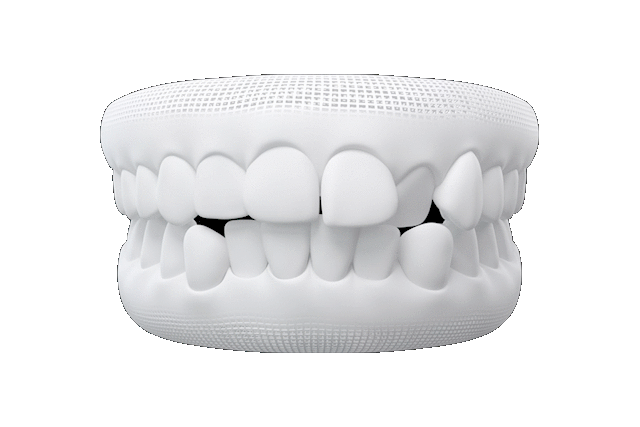Invisalign aligners
Invisalign aligners are innovative orthodontic treatment that uses transparent, removable braces to straighten teeth. The Invisalign system is designed to fit into your everyday life - unlike traditional braces, it is almost invisible, comfortable and easy to use. Aligners are made personally for each patient, ensuring accurate and effective treatment.
Why choose aligners treatment?
1. Discreet solution Invisalign cabinets are made of transparent plastic, which makes them almost invisible. It is the perfect solution for those who want to correct their smile without wearing metal braces.
2. Removable and convenient The cabinets can be easily removed for eating, drinking and brushing teeth. This makes it easier to maintain oral hygiene than with traditional braces, which can make cleaning difficult.
3. Effective and effective Invisalign treatment can achieve results faster than traditional braces, depending on the complexity of the individual case. Many patients see significant results in just a few months.
4. Less painful Invisalign braces cause less discomfort than traditional braces because they do not contain wires or metal clips that can rub the gums and cause sores.
Who is it suitable for?
Invisalign is a great solution if you want to:
Correct mild to moderate bite problems – such as crooked, crooked or spaced teeth.
Discreet and aesthetic treatment - Invisalign braces are almost invisible, making them ideal for those who want to avoid traditional metal braces.
A comfortable and removable orthodontic solution - braces can be easily removed to eat, drink or brush your teeth, providing flexibility and comfort in everyday life.
Effective and fast bite correction - Invisalign treatment is often faster than traditional braces, offering faster results.
Process
1. Initial consultation: Invisalign treatment begins with a consultation, during which the dentist evaluates your dentition, performs scans and determines whether Invisalign is the right solution for you. 3D images and X-rays help create an accurate overview of the state of the bite.
2. Personal treatment plan: After the consultation, a personal treatment plan is drawn up. The dentist will show you how your teeth move during the treatment and what result will be achieved. Virtual treatment planning provides an accurate overview of each stage.
3. Manufacturing of cabinet sets: Personal Invisalign cabinets are manufactured that adapt exactly to the needs of your teeth and bite. The caps should be worn for about 20-22 hours a day and replaced with new ones every 1-2 weeks depending on the dentist's recommendations.
4. Regular check-ups and treatment monitoring: The progress of the treatment is monitored during regular visits, where the dentist evaluates the results and adjusts the treatment plan if necessary. Checkups are usually every 6-8 weeks to ensure that the cabinets are moving the teeth correctly and into the desired position.
5. Final result and retention bracket: Once the desired bite result is achieved, the dentist may recommend retention brackets that hold the teeth in their new position and prevent them from moving back.

Invisalign vs traditional braces
Unlike traditional metal braces, which are permanently attached to the teeth, Invisalign is removable, discreet and more aesthetically pleasing. Invisalign offers more freedom and comfort, allowing the patient to decide when to wear the braces (however, it is important to wear them for at least 20-22 hours a day to achieve the desired results). In addition, Invisalign appliances require less maintenance and adjustments compared to traditional braces.
Conclusion
Invisalign is a great solution if you are looking for a comfortable and discreet way to straighten your teeth. It offers an individually tailored treatment that is fast, effective and almost invisible. If you want to improve your smile without traditional braces, Invisalign braces treatment is the right choice. Consult a dentist to find out if Invisalign is right for you!


